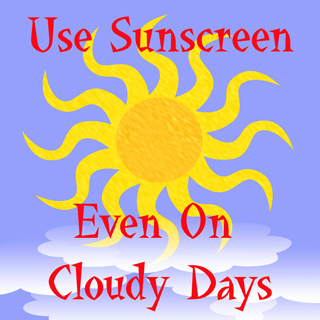Ultra-violet (UV) Rays and Sunscreens Explained

What are UV Rays?
Ultraviolet (UV) rays are invisible rays that are part of the electromagnetic (light) spectrum that reaches the earth from the sun. UV rays remain very harmful and can cause severe skin damage if not properly protected.
There are two types of ultraviolet radiation, UVA and UVB.
UVB rays from the sun tend to damage the skin’s more superficial epidermal layers, causing the skin to burn and tan. UVB rays do not significantly penetrate glass.
UVA rays from the sun are silent killers because we don’t feel them and they penetrate deeper into the skin and can reach to the dermis. UVA rays directly contribute to the development of skin cancers, premature skin aging (wrinkles, sagging, dark spots) and a weakened immune system. UVA rays penetrate through clear glass windows that do not have a UV coating.
Both UVA and UVB rays have been proven to cause damage to skin cells. Research has also made it clear that repeated unprotected sun exposure, getting sunburned, or repeatedly getting tan causes DNA damage that triggers skin cells to mutate. Over time and in the absence of sun protection and sun-smart behavior, these mutations turn into skin cancers.
What Are Sunscreens and SPF?
Sunscreens help prevent the sun’s ultraviolet (UV) radiation from reaching the skin. SPF — or Sun Protection Factor — is crucial, but it is only a measurement of how long it will take for UVB rays to redden skin. For instance, someone using a sunscreen with an SPF of 15 will take 15 times longer (about 4 hours longer) to redden than without the sunscreen.
Another way to look at it is in terms of percentages: An SPF 15 sunscreen blocks approximately 93 percent of the sun’s UVB rays; SPF 30 blocks 97 percent; and SPF 50, 98 percent. In order to reduce the risk of skin cancer and premature skin aging, the sunscreen must offer two things: broad-spectrum protection (protects against UVA and UVB rays) and an SPF of 15 or higher. Without both, the sunscreen only helps prevent sunburn.
Sunscreens with super-high SPF ratings are unnecessary (think SPF 60 and up) because they have a greater risk of causing irritation and are bound to create more problems for skin than they can prevent, especially for those with sensitive skin. For example, a sunscreen with an SPF 100 would get about 30 hours of sun protection and there’s nowhere in the world would have this much daylight. Remember, SPF is a rating about the length of time you can stay in the sun without burning. It is a time-related number, not quality.
Companies know that consumers think a higher SPF number means “better” protection, but it only means longer protection. You get the same quality of protection from an SPF 100 as you do from an SPF 50. A higher SPF means you would be applying more sunscreen ingredients on skin. However, the risk is that with a larger amount of active ingredients your skin is more likely to have a reaction.
To be sure your sunscreen can protect you from the sun’s UV rays (both UVA and UVB), the active ingredients of zinc oxide, titanium dioxide, avobenzone, oxybenzone or Tinosorb needs be listed. Our sun block product UV Protect SPF 50+ is carefully formulated with 100% naturally sourced sunscreen ingredients and antioxidants to provide critical UVA and UVB protection and skin’s environmental defenses.
Who Should Use Sunscreen?
Anyone over the age of six months should use a sunscreen daily. Even those who work indoor can be exposed to ultraviolet radiation throughout the day. Sunscreens that only use natural sources such as titanium dioxide and/or zinc oxide as the active ingredient are completely non-irritating and preferred for sensitive skin, those with rosacea, or for use on babies and children.
Common Myths
Wearing sunscreen can cause vitamin D deficiency.
There is some controversy regarding this issue, but few dermatologists believe (and no studies have shown) that sunscreens cause vitamin D deficiency. Also, vitamin D is available in dietary supplements and foods such as salmon and eggs, as well as enriched milk and orange juice.
If it’s cold or cloudy outside, you don’t need sunscreen.
This is not true. Even on a cloudy or hazy day, all the sun’s rays are present and damaging your skin. Always use sunscreen, even if you will only be out for a few minutes.
Other Articles
- Carnitine (L-carnitine) Burns Unwanted Fats Naturally
- Support Digestion and Fat Loss with Betaine Hydrochloride (HCl)
- Could Papaya Leaf be a Cancer Treatment?
- Malabar Spinach
- How Does Essential Natural Male Vitality Work?
- Men’s Sexual Wellness: Key to Healthy and Enjoyable Sex Life
- Chitosan – Answer to Weight Problems
- Surgeon still active at 100
- The Mangosteen Pericarp
- Key Effects of GANODERMA LUCIDUM



Comment for this article